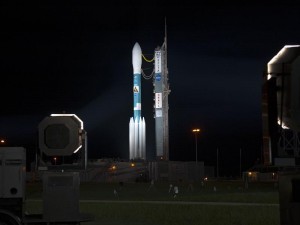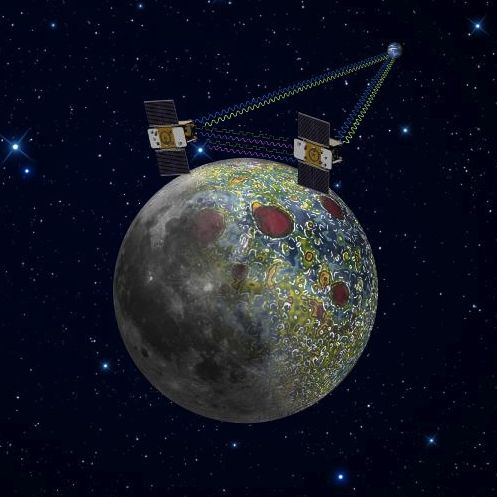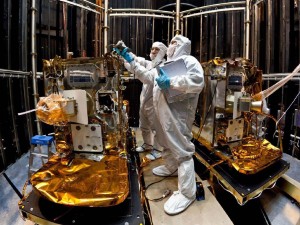NASA’s Gravity Recovery and Interior Laboratory, or the Grail spacecraft, launched successfully today (September 10, 2011) on a Delta II rocket from Florida’s Cape Canaveral Air Force Station, headed for the moon. The mission should give planetary scientists highly accurate measurements of the moon’s gravity.
There were two one-second launch windows today at 8:29 a.m. and 9:08 a.m. EDT. Launch controllers skipped the 8:29 launch when weather balloon data indicated upper-level winds exceeded safe levels. Liftoff came in the second 1-second launch window at 9:08 a.m. EDT (13:08 UTC).
The twin GRAIL lunar orbiters’ launch had been delayed twice. They were canceled on September 8 and 9. The September 8 launch was scrubbed due to high winds, and the launch was postponed a second time in order to provide additional time to review propulsion system data from Thursday’s detanking, according to NASA.

The two craft are embarking on separate trajectories to the moon. The trip is expected to last three to four months after they separate from the launch vehicle.
GRAIL A and GRAIL B, as the craft are dubbed, launched together in a United Launch Alliance Delta II heavy rocket. GRAIL A separated from the rocket about nine minutes after launch, its partner following about eight minutes later. The primary objective of the GRAIL (Gravity Recovery And Interior Laboratory) mission is to map the gravity of the moon, similar to what GRACE (Gravity Recovery And Climate Experiment) has been doing for Earth since 2002.

Here’s how GRAIL’s gravity-mapping ability works. As one body in space orbits another, changes in the larger body’s topography – its hills and valleys, for example – minutely affect the orbital path of the smaller body by slightly increasing or decreasing the amount of gravity exerted upon it. As GRAIL records these changes, it will reveal details about mountains, craters, and other features on the moon, including those below the moon’s surface.
Once arriving at the moon, the twins will spend about two months sliding into orbit with GRAIL B following GRAIL A. After the proper orbit is established, an instrument on board each craft will measure relative changes in velocity, which can then be translated to map lunar gravity. The instruments are so precise they can detect a change in the distance between the two GRAIL orbiters the diameter of a red blood cell. The science phase is expected to last 82 days.
The mission is expected to increase knowledge of far-side gravity a thousandfold, and near-side a hundredfold. The new knowledge will be essential for planning future moon landings. It will also contribute to our understanding of the moon’s history of heating and cooling, which will provide insights into how it, and therefore other bodies in our solar system, formed.

Also on board the craft are cameras which will be used as part of NASA’s MoonKAM (Moon Knowledge Acquired by Middle school students) program, making this the first NASA planetary mission to carry instruments solely for education and public outreach. Developed by Sally Ride, the first American woman in space, MoonKAM allows fifth- to eighth-grade students whose teachers register online to request specific areas of the moon to be photographed. The images will then be made available on the MoonKAM web site.
Bottom line: NASA’s twin GRAIL spacecraft – designed to orbit and study the moon – launched September 10 from Florida’s Cape Canaveral Air Force Station after planned launches on September 8 and 9 were canceled.











